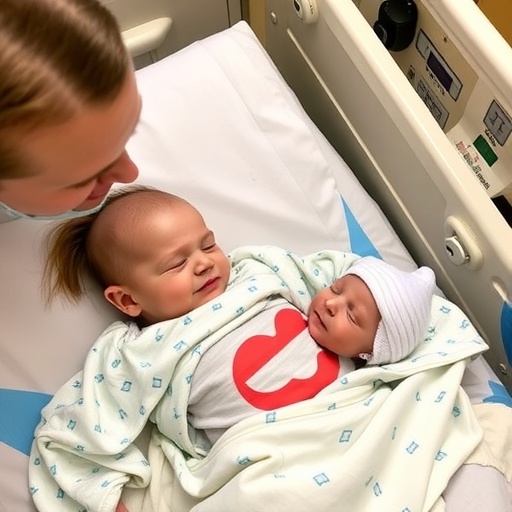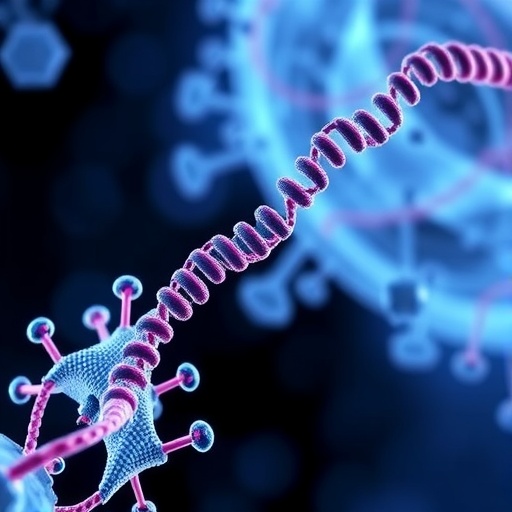In the dimly lit, high-stakes environment of a Neonatal Intensive Care Unit (NICU), where fragile premature infants cling to life amidst a symphony of beeping monitors and precise medical interventions, an underexplored narrative quietly unfolds: the perceptions and emotional responses of parents regarding the pain experienced by their vulnerable babies. A recent qualitative study spearheaded by Wong, Wilson, Jones, and colleagues, published in the Journal of Perinatology in 2025, painstakingly delves into parental awareness and interpretations of neonatal pain, revealing complex layers of understanding, misconception, and emotional turmoil that surround these critical early encounters.
Premature infants, born before the completion of the typical gestational period, frequently undergo numerous invasive procedures during their NICU admissions, including blood draws, intubations, intravenous line placements, and other interventions vital for survival. These procedures, while medically necessary, are not without painful consequences. However, due to their neurological immaturity, premature neonates cannot express pain in ways familiar to adults, leading to potential gaps in recognition and interpretation by caregivers, including parents.
The study conducted by Wong et al. employed qualitative methodology, engaging parents through in-depth interviews to unravel their perceptions and emotional narratives regarding their infants’ pain. This approach allowed researchers to move beyond quantitative scales and clinical assessments to grasp subjective dimensions of parental experience. The resulting findings illuminate the dual challenges parents face: grappling with their limited ability to observe overt pain indicators in premature infants, and managing their own emotional distress engendered by witnessing invasive procedures.
.adsslot_AgZyO8PIsm{width:728px !important;height:90px !important;}
@media(max-width:1199px){ .adsslot_AgZyO8PIsm{width:468px !important;height:60px !important;}
}
@media(max-width:767px){ .adsslot_AgZyO8PIsm{width:320px !important;height:50px !important;}
}
ADVERTISEMENT
A key revelation of the study is the divergence in parental awareness about neonatal pain. While some parents displayed a clear understanding of pain-related expressions, typically linked to observable physiological signs such as crying or agitation, others underestimated or even questioned the capacity of neonates to experience pain at such an early developmental stage. This variability underscores the need for enhanced communication strategies within NICUs to equip parents with evidence-based knowledge about neonatal pain perception mechanisms.
Pain in premature infants is a multifaceted phenomenon. Neurobiologically, nociceptive pathways begin to develop relatively early in gestation, suggesting that premature neonates possess the anatomical substrates necessary for pain perception. However, their immature central nervous systems may modulate pain differently compared to full-term infants or older children. Scientific consensus now acknowledges that these infants not only perceive pain but may also be more vulnerable to its long-term neurodevelopmental consequences if inadequately managed.
Within this framework, the emotional burden on parents becomes particularly poignant. The study participants voiced feelings of helplessness and guilt, emotions amplified by their inability to shield their babies from pain or fully understand their experiences. Many described a profound internal conflict between trusting medical staff to provide humane care and their personal anguish at witnessing their infants’ distress.
Technological advancements have augmented clinical capacity to monitor and manage neonatal pain. Tools such as the Premature Infant Pain Profile (PIPP) and Neonatal Facial Coding System (NFCS) provide systematic frameworks for evaluating pain intensity based on physiological and behavioral indicators. However, the interpretation of these assessments remains largely within the clinical domain, emphasizing a disconnect between healthcare providers and parents that this research aims to address.
The implications of unmitigated neonatal pain extend beyond the immediate distress. Emerging evidence in developmental neuroscience suggests that repeated painful stimuli during critical phases of brain maturation may alter synaptic connectivity and stress-response systems, with potential long-term sequelae in cognitive, emotional, and sensory processing domains. This heightens the stakes for meticulous pain management during NICU stays.
Wong and colleagues’ qualitative insights provide a unique window into parental cognition and affect in this context. The narratives reveal a mosaic of coping strategies, ranging from active seeking of information and advocacy to emotional withdrawal as a protective mechanism. This heterogeneity reflects broader psychosocial dynamics that can influence family-centered care outcomes and underscores the importance of tailored support interventions.
Moreover, the study unveils parents’ perspectives on the adequacy of NICU environments in addressing pain. Participants frequently commented on the clinical nature of neonatal care spaces, sometimes perceiving them as intimidating or impersonal. Suggestions emerged for more family-integrated designs and practices that emphasize warmth, reassurance, and partnership.
In addition to parent-provider communication, the study touches upon the ethical dimensions of neonatal pain management. Parents articulated expectations for medical teams to prioritize humane practices and minimize unnecessary procedures, echoing calls within the medical community for enhanced protocols aimed at reducing procedural pain without compromising clinical efficacy.
As neonatal medicine advances, integrating parental voices into pain-related decision-making can foster shared empowerment. Structured counseling sessions, provision of educational materials, and involvement in pain-relief planning represent actionable steps to align clinical objectives with familial concerns.
The study also highlights potential cultural and socioeconomic factors shaping pain perception. Variations in health literacy, previous experiences, and societal norms regarding neonatal vulnerability influence parental attitudes and responses. Recognizing this diversity is essential for developing inclusive communication strategies and equitable care models.
Finally, Wong et al.’s work serves as a clarion call for ongoing research into the complex interplay between neonatal pain, parental perception, and developmental outcomes. Future investigations may benefit from incorporating longitudinal designs to explore how early pain experiences and parental coping affect familial well-being and child health trajectories.
In sum, this landmark qualitative study enriches our understanding by navigating the intimate, often unspoken emotional landscapes of parents confronting the fragile lives of premature infants in the NICU. By articulating the intricacies of parental perception and highlighting critical areas for improvement in communication and care, it lays foundational groundwork for enhancing both neonatal pain management and family-centered neonatal intensive care practices. As the neonatal field evolves, integrating technology, neurobiology, ethics, and human experience promises a more holistic approach to the humanity at the heart of early life medicine.
Subject of Research: Parental awareness and perceptions of pain experienced by premature infants due to invasive procedures during NICU admission.
Article Title: Parental perception of pain in premature babies in neonatal intensive care unit: a qualitative study.
Article References:
Wong, S.R., Wilson, I.M., Jones, L.E. et al. Parental perception of pain in premature babies in neonatal intensive care unit: a qualitative study. J Perinatol (2025). https://doi.org/10.1038/s41372-025-02341-x
Image Credits: AI Generated
DOI: https://doi.org/10.1038/s41372-025-02341-x
Tags: emotional responses to infant painemotional turmoil of NICU parentsinvasive procedures in NICUmedical interventions and infant painmisconceptions about neonatal painNICU experiences of premature babiespain recognition in premature infantsparental narratives in neonatal careparents’ perceptions of neonatal painqualitative study on parental awarenesssupport for parents in NICU settingsunderstanding pain in newborns






